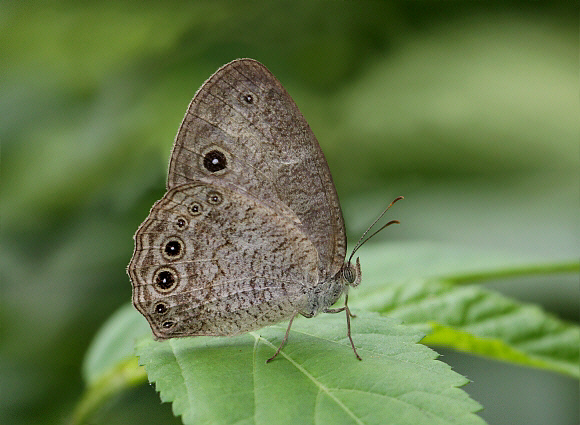
Introduction
Bicyclus is the most numerous of the Satyrine genera in Africa, comprising of about 85 species, 50 of which occur in West Africa. The butterflies are collectively known as Bush Browns, and can be thought of as the sister genus to the Asian Mycalesis.
Bicyclus are characterised by having a regular series of submarginal ocelli on the hindwings, and a pair of ocelli on the forewings, of which the lower ocellus is always the largest. In most species the ocelli are very prominent, but in a few species such as sweadneri they are vestigial, especially in the dry season morph. Most species have very rounded wings, but again there are a few exceptions such as zinebi which has a squarish apex on its forewings, and sambulos which has a stumpy “tail” on the hindwings.
Bicyclus dorothea is much paler in colour than the other Bush Browns, and cannot be confused with any other species. It is one of the commonest forest species in western Africa, and is found from Sierra Leone to northern Angola.
Habitats
This species is found in disturbed, degraded forests, where it breeds along the edges of grassy tracks and roadsides.
Lifecycle
The larval foodplants are grasses, of which several species are probably used by wild populations. In captivity the species has been reared successfully on Paspalum and Axonopus ( Poaceae ).
Adult behaviour
Unlike most other butterflies, this species seems to prefer flying in overcast weather, and often continues to fly during light rain. It will however also fly in sunshine early or late in the day when temperatures are lower. Both sexes will visit flowers for nectar, but are more often seen sitting about on low foliage.
